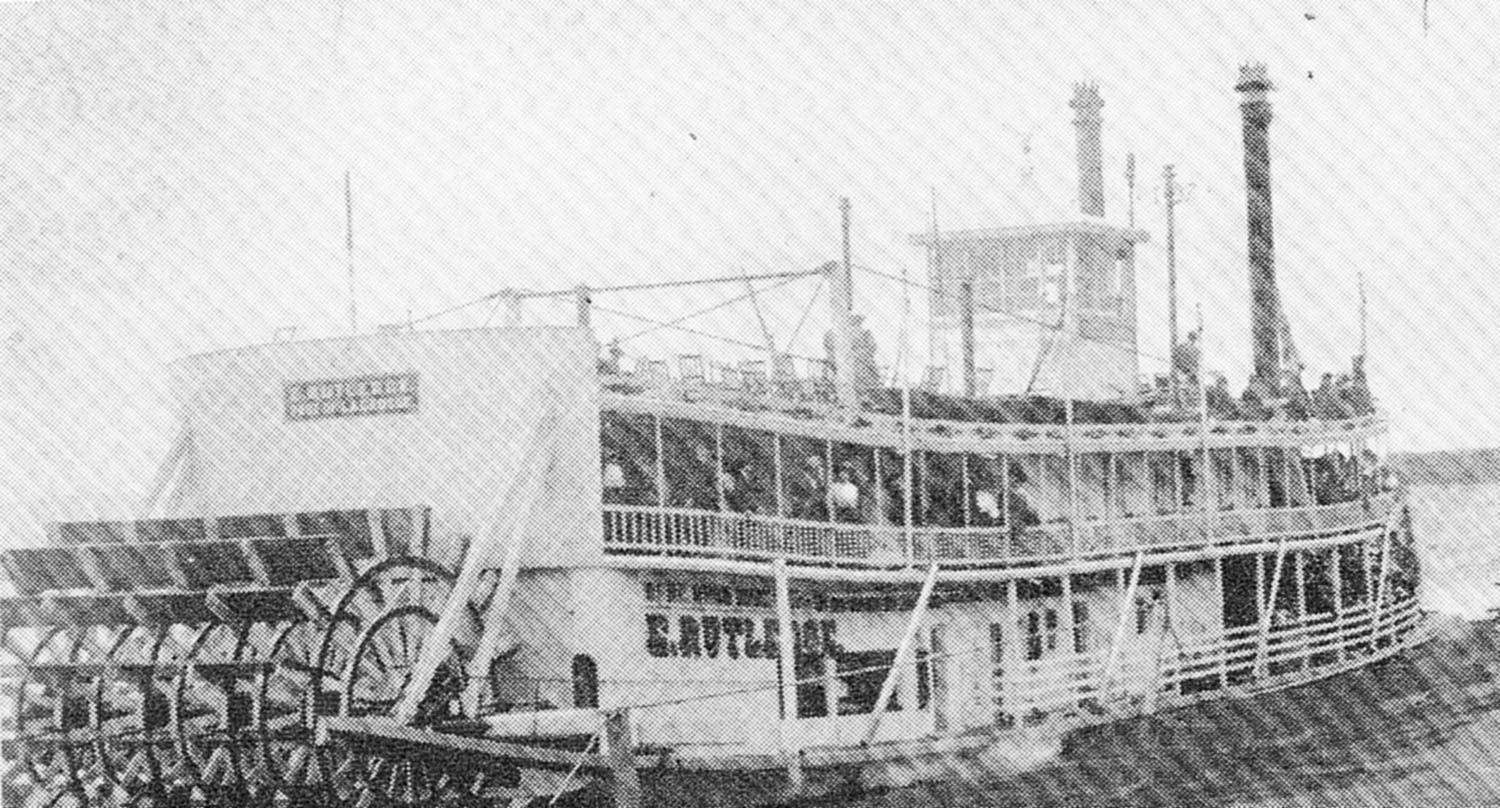Built at Rock Island, Ill., in 1892 for the prominent lumber firm of Weyerhaeuser & Denkmann, the E. Rutledge was named for a wealthy lumberman from Chippewa Falls, Wis.
The sternwheeler was built on a wooden hull that measured 132.7 feet in length by 30.5 feet in width, and having a depth of 4.7 feet. Three boilers supplied steam to engines (recycled from the rafter Stillwater) which had 15-inch cylinders with a 5-foot stroke. Capt. William Whisler served as master for some time, with Conrad Kraus presiding as chief engineer.
The Rutledge often utilized the steamer H.C. Brockman as a bow boat in handling lumber rafts. The Brockman was a sister boat to the F. Weyerhaeuser and was equipped with 12 staterooms that were often used by members of the firm for personal outings. During 1907, the Rutledge delivered a raft to Rock Island measuring 1,430 feet long and 285 feet wide, setting a record for that time.
In 1905, the rafter was sold to Capt. Frank J. Fugina, of Fountain City, Wis., who operated the vessel in the excursion business.
On September 7, 1908, while entering the railroad drawbridge at Winona, Minn., the bridge tender reportedly was waving to passengers on the packet La Crosse, which had preceded the Rutledge through the draw, did not see the latter boat and commenced closing the draw. The span caught the smokestacks, ripping them off, as well as knocking down the pilothouse, disconnecting all signal bells to the engineroom. Released from the bridge, the riverboat floated downstream five to six hundred feet where the anchor was dropped. Records do not mention any deaths or injuries, but the incident was taken to court and judgement was rendered in favor of the railroad. Capt. Fugina appealed the case to a higher court, which reversed the previous verdict.
Repaired, the Rutledge was sold in 1906 to the Woods Produce Company, of Red Wing, Minn., and the name was changed to John H. Rich to honor the president of the company. At that time, the steamboat’s home port was changed to St. Paul, Minn.
About 1909, the Rich was sold to the Mayo brothers, of Rochester, Minn., to become their private steamboat. Drs. Charles and William Mayo changed the name of the boat to Oronoco in 1913. The vessel was registered as a towboat in 1914 at St. Paul and by 1918 was owned by the St. Louis & Memphis Steamboat Company. We’ll feature more about the Oronoco and its history in a future Old Boat Column.
As an interesting aside, Capt. Frank Fugina, in 1945, authored and published a fascinating 313-page book entitled “Lore and Lure of the Upper Mississippi River.” Profusely illustrated with steamboat photographs, the book is sought by collectors of river memorabilia. Ray Fugina, son of Capt. Frank, started on the river at age 20 as steersman aboard the Federal Barge Line towboat C.C. Webber. By the 1960s, Capt. Ray was with the U.S. Coast Guard as District Merchant Marine Inspector for all of the state of Alaska, headquartered in Juneau.
Editor’s note: For questions or suggestions regarding the Old Boat Column, Keith Norrington may be contacted by e-mail at curatorkeith@yahoo.com, or by mail through the Howard Steamboat Museum at P.O. Box 606, Jeffersonville, Ind. 47131-0606.
Caption for photo: The rafter E. Rutledge on the Upper Mississippi River. (Keith Norrington collection)




